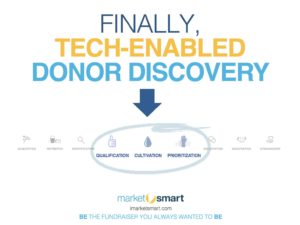Relationships building is part art, part science. And, as we all know, raising major and legacy gifts is all about building meaningful relationships. Over the past few years, the strategies and tactics nonprofits employ to raise major and legacy gifts has evolved and changed, and with good reason.
Tactics from the past simply don’t work as well as they once did. Annual reports from Giving USA make it clear that giving is going up, however the total number of donors is going down. The rapid growth in donor-advised funds is also alarming — individuals are giving to DAFs in place of traditional charities. What does it all mean?
No matter how you slice it, the landscape of philanthropy is changing, and the impact of those changes can be felt resoundingly within major and legacy giving departments. The culprit for this change? Among other things, robocalls, and the seemingly never ending nuisance they cause on each of our lives.
Here’s what I mean…
Traditional tactics to raise major and legacy gifts
There are tried and tested tactics to build your major and legacy giving donor pipeline.
For legacy gifts it could be:
- Adding an insert to your newsletter;
- Holding estate planning seminars for your supporters; or
- Engaging with local financial advisors.
For major gifts, tactics have traditionally included:
- Wealth screening your database;
- Finding prospects who give major gifts to other local charities and targeting them; and
- Identifying prospects through board member relationships.
Each of these tactics still have a place in today’s development office, however their effectiveness is seemingly dwindling. Why? Because getting to the next step (talking to a prospect) is becoming even harder than it already was.
That is to say that even when a legacy donor returns your newsletter insert and tells you that your organization is in their will, you still may not be able to get ahold of that donor to thank them and begin the stewardship process. Or, after you’ve wealth screened and identified a dozen prospects in your area, good luck getting any of them on the phone to have a conversation with you to begin to build rapport.
This challenge is not unique to fundraising however, we experience it just as well with our own sales team here at MarketSmart! And, as we acknowledged above, major and legacy gift fundraising (just like our sales process), requires relationship building, and a pivotal step in developing a relationship generally comes from talking to someone! Which, all things considered, is getting harder and harder to do.
Robocalls are changing fundraising
You don’t have to be an expert detective to figure out just how big of a problem robocalls are.

Late last year, at the end of 2019, the federal government introduced a new law that increased the penalties lodged against robocallers in an effort to decrease their persistence. Data from YouMail, a private robocall blocking service, reported 54 billion robocalls made in 2019, up from 48 billion the year before. And, if you asked any peer, friend, or significant other if they have recently received a robocall the answer is most likely “yes.”
As more and more individuals experience this frustrating interruption to their day, they inevitably become desensitized to picking up the phone when the number is unknown. Think about it, when was the last time you answered an unknown call and you weren’t greeted with “Congratulations, you’ve just won…”?
I could ramble on with personal anecdotes, or cite academic papers that calculate the economic impact of robocalls, but neither would serve much purpose. The challenge isn’t convincing anyone that robocalls are a problem (and a major one for fundraising), it is in finding a solution that still generates results (ie talking with prospective major and legacy donors).
New tactics to raise major and legacy gifts
That leads us to “new” tactics your organization can employ to try and foster meaningful relationships with your donors and ultimately talk to them. Yes, these tactics are more work, take longer to yield results, and might even be more expensive, but, at the end of the day, they appear to be more effective. We like to call these tactics “tech enabled donor discovery,” ie using technology to help develop your relationship with a prospect.
You can try:
- Let donors schedule meetings with you, instead of you calling them;
- Track “digital body language” to understand when your donors are showing interest;
- Survey your donors to understand where they are in the consideration process; and
- Segment your marketing communications based off of what you learn.
These tactics aren’t incredibly complex. Our goal is to be more informed about when we should try and reach out to a prospective donor.
If someone has been all over your organization’s “how to give” webpage, try giving them a call.
If you know they’re interested in meeting with you because that’s what they answered on a survey, give them a call.
If you aren’t sure if someone is interested in talking with you, give them your “meeting” page and allow them the opportunity to schedule a time to meet with you.
Again, these aren’t complex concepts, they’re simply a bit different than the norm. And, doing things different than the norm should yield results that aren’t the same old same old.
So what do you think? How will fundraising adapt to these challenges? Will making telephone calls ever be the same?


Do you have an idea of what a “good” meeting request rate would be? (ie. percent of offers)